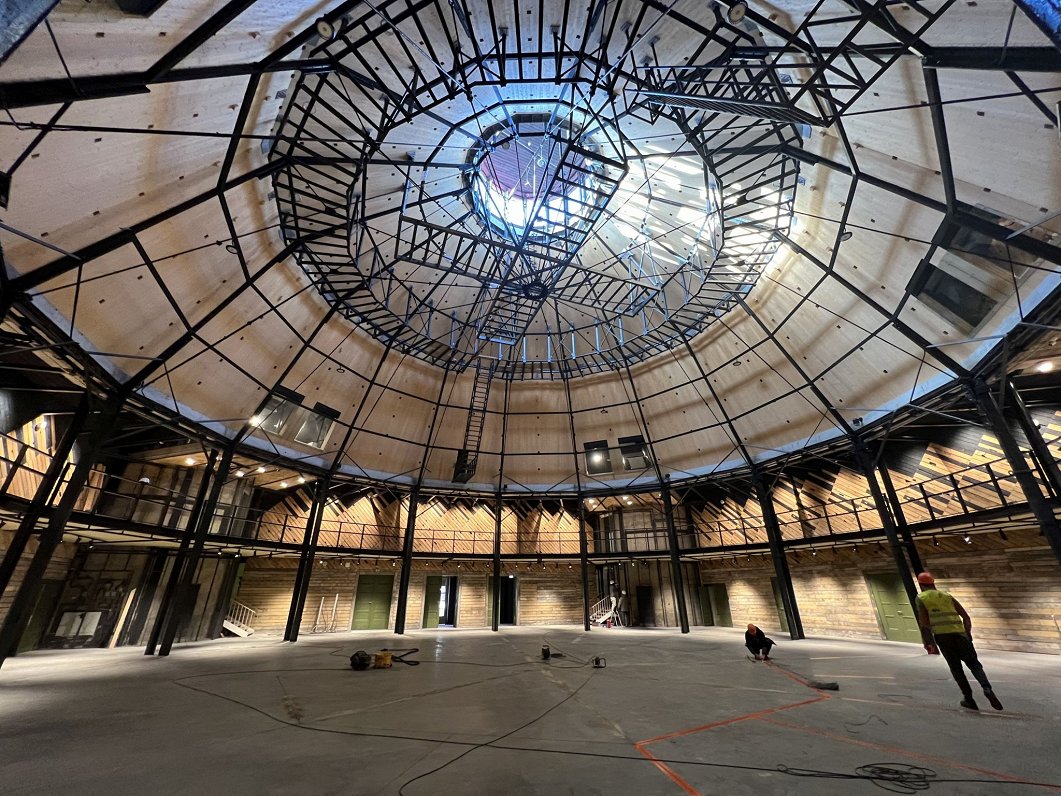Correction
The initial and final estimates of the costs of the projects have been amended after corrections were received from the Rīga Circus.
The works have revealed a lot of surprises over a year and a half. Under many layers of cladding, some valuable historical evidence has also been found, which will now be exhibited to visitors of the circus.
The historical arena has been made lighter by a wooden finish and a large dome through which daylight now shines in the arena. The ambitious construction had been full of surprises. Valdis Koks, chief of AIDACO Construction, said: “The most surprising thing was, of course, the construction materials from which the site was built. It's built from what was available at that time and lying around.”
One of the biggest surprises were the arena wooden boards, which are at least 130 years old. Some ornaments remain on these panels.
“This whole thing is the historical look. These boards were found under [many] layers of cladding and are now exposed,” said Valdis Koks.
The Rīga circus, built in the 1880s, reveals many surprises because it was constructed illegally, said Uldis Lukševics, head of the architects' office NRJA, pointing out that the building had major problems with heat loss, and that, first of all, the circus had to be insulated while maintaining its historical touch.
“We're trying to highlight natural, true things. If it is concrete, it is concrete, if wood then it is wood, if plaster, it is plaster. Maybe it could be called “unfinished interior” which somehow leaves people a chance to imagine how it had been and how it had been layered on top of each other,” Lukševics said
The repair is scheduled to be completed in November, but all work in the circus will not end. The building requires stands and light, sound and curtain systems. There is also a need for furniture and other equipment to be installed next year, but, as the Ministry of Culture reports, it still lacks half a million euros. Regardless, the first events have been planned this year.
Circus animals in Latvia have been banned for several years. Instead, acrobats and other artists will be seen in the arena. The creative director of Riga Circus, Mārtiņš Ķibers, said: “It's not pure entertainment, it's a kind of art. It's one of the arts that develops most rapidly, I think, in the 21st century. Though it is based on the same disciplines that have been in the past, these circus shows are different – it is a show that is similar to contemporary dance or a theatrical show, it is a non-verbal form of art where there is no need for languages.”
The initial cost of repairing the Riga circus was estimated at around EUR 4.5 million, but due to the unforeseen works and the consequences of the Ukraine war, the amount has increased, reaching nearly EUR 5.5 million, most of which is covered by the European Union. Seating, furniture and equipment systems are not included in the cost. It is planned to further build the so-called black box theatre and circus school in the backyard of the historic building but for that there is no funding yet.



























